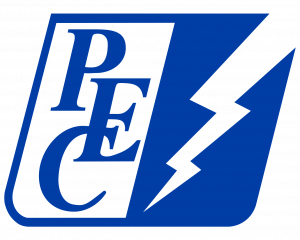by Moses Leos III
Having grown up around electricians, Eric and Derrick Hoffman knew at an early age what their calling was.
But when they studied sustainability at Texas State University, the two realized they would focus on harnessing the power of the sun.
That energy source is “proven”, Eric Hoffman said, and that’s why they opened their solar panel installation business, HE Solar LLC in Buda – to give residents an option that really works.
“It’s outlasted wind power and hydroelectricity,” Eric Hoffman said. “It’s proven itself because it’s a small scale renewable energy for the residential market.”
According to Eric Hoffman, the use of solar panels is a “tried and true way” for homeowners to produce energy.
He said a solar panel system could also take a “big chunk” out of a homeowner’s electricity bill, depending on the size and type of their installation.
Hoffman said solar panel installations can run anywhere from $20,000 to upward of $60,000.
How solar panels work, according to Hoffman, is by taking energy output from the sun and collecting the energy in a silicone wafer. The wafer, when exposed to light, causes a current to flow through it.
Hoffman said the current produced by solar panels, called direct current (DC), goes through an inverter, which transfers it to alternating current (AC), which is the energy current delivered to U.S. homes by electric companies.
But the current produced by solar panels, which is measured at 1,000 watts per meter squared, isn’t enough for an entire home.
“Solar production follows the sun’s exposure,” he said. “It’s not a fully reliable current.”
To offset that issue, solar panel companies either tie solar panel systems to an existing power grid, or install large battery storage units to collect enough electricity for use.
A grid-tied system uses collected solar power first before tapping into a utility system grid.
Due to a slightly higher voltage created by the inverter, any excess flow would go back into the utility system’s grid, and in turn, to neighbors.
He said off-grid systems are common in rural areas, where residents are miles from the nearest power poles.
Hoffman said his company works grid-tied, which works in tandem with a utility company’s grid, and off-grid, which features large battery storage tanks for continuous use.
While the cost of a system is initially steep, Hoffman said there is a return on investment “years down the line.”
Hoffman said most solar panel units have a 25-year warranty.
“You’re paying up front for energy instead of buying it from utility companies,” Hoffman said. “Solar panels have a return on investment that’s proven by offsetting energy costs. You have a power plant on your roof.”
Hays County currently does not have a rebate program for solar panel installation. A 30 percent federal tax credit is available through the federal government for solar panel installations.
In 2015, Pedernales Electric Cooperative (PEC), which is the electric utility provider for almost all of Hays County, implemented a “System Interconnection” service. It was done to take advantage of solar panel, wind energy and turbine technology.
The service, according to PEC’s website, uses net metering, which routes power through a meter which measures PEC electricity a customer receives. The meter then subtracts the amount of electricity exported by the sustainable equipment.
Prices for solar panels, Hoffman said, is “reliably stable” and hasn’t moved much. With the streamlining technology, he said it could help consumers make the investment.
“On a global scale, as energy storage comes along, people can have de-centralized power for their house,” he said. “It’s great for the country to be self-sustainable and reliant.”
For the city of Buda, the use of solar panels is expected soon to power its new Parks Maintenance Building.
With the implementation of a $20,000 system, the city estimates saving roughly $1,000 in electricity costs per year.
While the return on investment will take time, Buda Mayor Todd Ruge said it was a “great idea.”
“Not only that, but it lessens our carbon footprint,” Ruge said.
The city is also exploring options of installing solar panels in its new city hall and police department facility.
Ruge said the city could in the future encourage residential developments to consider sustainable options such as solar panels and xeriscaping.
According to Ruge, residents would be more inclined to consider installing solar panels as the technology becomes more cost effective.
“With any technology, the older the technology is, the cheaper it becomes,” Ruge said.









